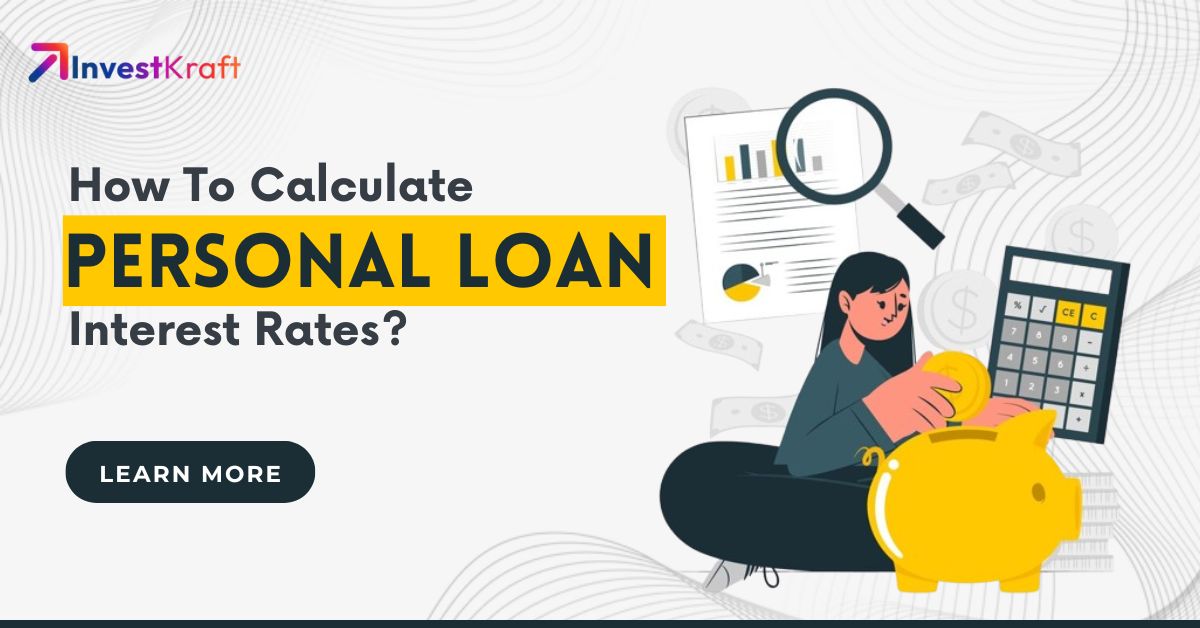Understanding Personal Loan Interest Rates in India

In today’s fast-paced world, people are running after money and it should come as no surprise for most of us. The reason behind this is that money has become central to everything around us. From buying groceries to transportation, shopping, education, healthcare, and other elements, it is difficult to live a happier life without money. And, it is also true that no matter how much you earn, you will always think that you need money.
In most cases, when we come across the need for funds, personal loans emerge as the most wonderful and easier way to secure funds. Since personal loans come at a specific interest rate, the borrowers are supposed to pay the borrowed amount in the form of Equated Monthly Installments (EMI).
The interest rates on a personal loan are largely governed by the Reserve Bank of India (RBI). Any kind of increase or decrease in the repo rate directly affects the EMI paid by a borrower. However, to combat inflation, the RBI has made no changes in the repo rate which has kept the personal loan interest rates of a majority of financial institutions unchanged.
What Does Interest Rate on Personal Loan Mean?
Personal loans are a form of fixed-term credit that requires you to make regular monthly payments over a specified period. These loans come with interest rates that are calculated based on a percentage of the borrowed amount.
The quoted range is the nominal annual percentage rate or APR which includes fees and costs but not compounding or inflation. Personal loans typically use the monthly periodic rate, calculated by dividing the APR by 12. The APR or periodic rate determines the additional amount paid to borrow and repay the principal over time.
Factors Affecting Personal Loan Interest Rates
As a borrower, you need to have a thorough knowledge of various factors that affect the interest rate for a personal loan you take from a bank or financial institution.
- Employment Details and Employer’s Profile: A majority of banks and financial institutions pay consideration to the borrower’s employment history, current organization, job stability, residential status, etc. Lenders use this information along with a fixed obligation to income ratio (FOIR) to determine the interest rate they should levy for your loan application. In most cases, government employees get more weightage than private sector employees due to their job stability and employer’s profile.
However, this is not always true as several multinational corporations have excellent reputations among banks which means if you are working in a reputed private organization, your personal loan application is highly likely to get approved by all top lenders in India.
- Comparison of Loan Offers: At present, there are large numbers of aggregator platforms accessible that can help borrowers in choosing the best loan offer. After determining your eligibility and required documents, you may choose one of the many portals available today that compares various personal loan offers in one place.
Do not hesitate to follow their endorsements if you have a feasible record of good communication with your bank. They might be able to present an offer specifically for you that meets your needs the best.
Also Read: 10 Factors That Affect Personal Loan Requirements
Why is it Important to Calculate Interest Rates on Personal Loans?
An interest rate provides information on the cost of borrowing and the potential rewards for saving.
- When you borrow money, the interest rate represents the cost of borrowing and is expressed as a percentage of the total loan amount. A higher interest rate means you will have to repay more for a loan of the same size.
- The savings rate is crucial for savers as it determines the amount of money that will be deposited in their accounts as a percentage of their savings. A higher savings rate means a greater amount will be paid into the account for a particular deposit size, making it beneficial for savers looking to maximize their savings.
- Any movement in interest rates, whether they increase, decrease or remain unchanged, can have significant consequences. Therefore, it is essential to closely monitor any fluctuations.
How Do Personal Loan Interest Rates Work
If you have ever applied for a loan, you can easily understand that banks and financial institutions charge a certain percentage on the disbursed loan amount and the borrowers need to repay the same as Equated Monthly Installments (EMIs). This is because lenders usually work by lending the money to borrowers and earn the interest as their source of income.
The higher the interest rate a bank charges, the more profit it would make. Several factors play a role in determining the interest rate that is levied by the banks from the borrowers. For example, your credit score, loan repayment tenure, and amount borrowed help the lenders decide the specific interest rate they should charge against the borrowed amount.
What are the Methods of Calculating Personal Loan Interest Rates in India?
Lenders in India typically use one of the 2 methods, either simple or compound, to calculate interest on personal loans. The method chosen usually depends on the stated APR provided in the disclosure document. Borrowers need to understand these calculations to make informed decisions about their loans.
1. Simple Interest Method
The simple interest method is widely used for personal loans due to its straightforward nature. In this method, the interest rate is applied only to the principal amount, making it a popular choice for many borrowers.
Late or missed payments increase the portion of your payment that goes towards interest, reducing the amount that goes towards the principal. Interest and late fees are handled separately from the principal amount. The accrued principal interest and late fees will be due at the end of your loan.
2. Compound Interest Method
The compound interest method yields the same results as the simple interest method if payments are made on time because interest does not accumulate. Paying early or making extra payments can also lead to a shorter loan term and reduced overall interest. This method is commonly used in credit cards, mortgages and student loans.
Important Tips to Manage Personal Loan Interest Rates in 2024
Managing personal loans can indeed be challenging, but by staying organized and creating a budget, it is possible to avoid missed payments and potential financial stress. Setting up automatic payments, tracking expenses and seeking assistance from a financial advisor or counsellor can also provide valuable support in managing personal loans effectively.
- Make a Budget: Before applying for a personal loan, it is important to evaluate your financial situation by creating a budget. This will enable you to determine if you can comfortably afford the monthly EMIs. Additionally, incorporating the loan payments into your budget will help you manage your finances more effectively.
- Pay on Time: Setting up auto-debit payments is a convenient and reliable option to ensure that your personal loan payments are made on time. Late payments can result in significant penalties and have a detrimental effect on your credit score. By automating your payments, you can avoid these consequences and maintain a positive credit history.
- Prevent Paying Late Fees: If you fail to make a payment, it is important to contact your lender right away and address the situation promptly. Late payment fees are commonly imposed by lenders and some may even report the late payment to credit bureaus, potentially harming your credit score.
- Pay your Loan Early: Consider prepaying your loan if you have additional funds as it can lead to interest savings and a shorter loan term, helping you achieve debt-free status sooner. But do check for any prepayment penalties before making additional payments.
- Check your Loan Terms: Regularly reviewing your loan terms is crucial to avoid any unexpected fees and understand the interest rate, repayment schedule and potential penalties. Staying informed about these terms will enable you to effectively manage your loan and make informed financial decisions.
FAQs
1. How Much Time Is Taken By Lenders To Disburse A Personal Loan?
Most lenders take 1-3 days for loan disbursal once the loan application is approved.
2. What Does EBLR Mean?
EBLR, or external benchmark lending rate, is the correct acronym. Most lenders choose the repo rate as the external benchmark to connect their variable rate personal loans.
3. What Is the Personal Loan Interest Rate?
The interest rate might be as high as 35% or as low as 10%. The interest rate varies from lender to lender and is based on a variety of variables, such as the loan amount, period, and credit score of the borrower.
4. Can personal loan interest rates change over time?
Choosing a personal loan with a fixed interest rate means that the interest rate will remain constant throughout the entire loan period. On the other hand, if you choose a floating interest rate, the bank has the right to adjust the interest rate following any changes in the MCLR (Marginal Cost Of Funds Based Lending Rate).
5. Is it possible to lower my personal loan interest rate after signing the agreement?
Yes, you can lower your personal loan interest rate after signing the agreement provided you fulfil certain conditions laid down by the lender.
Related Posts;
- Apply for a Personal Loan on Aadhaar Card
- Get Personal Loan with Pan Card & KYC Documents
- Get Instant Personal Loan without Documents
- Get a Personal Loan for Self-Employed Individuals without ITR
- Get a Personal Loan Without a Salary Slip
Verify Phone Number
Related Post

Advance Salary Loan in 2026: Get Loan Against Salary at Lowest Interest Rates
There are times when you need money but you do not have property, fixed deposits, gold, or eno...
Read more...
How to Get an Instant Personal Loan Up to Rs.50,000 Without a PAN Card
Have you ever been in a situation where you needed a personal loan instantly but did not have...
Read more...
Instant Personal Loan Without CIBIL: How to Get 50,000 to 5 Lakh Easily
Sometimes, an emergency financial situation comes up, and we suddenly find ourselves out of options....
Read more...
A Complete Guide to Consumer Durable Loans in India 2025
Are you dreaming of a sleek new refrigerator, a powerful washing machine, the latest smartphone, or...
Read more...
A Complete Guide to Getting a Loan as a Self-Employed Individual in India
Being self-employed comes with a lot of freedom—you set your own hours, follow your passion, a...
Read more...
Top 10 Must-Know Tips Before You Apply for an Education Loan in India 2025
Embarking on higher education is a pivotal moment in life, a stepping stone towards achieving...
Read more...
Everything You Need to Know About Personal Loans for Women 2025
The entrepreneurial spirit knows no gender. Across the globe, women are brimming with innovative ide...
Read more...
How Professional Loans Can Help Freelancers and Entrepreneurs Grow Their Business?
India, a vibrant hub of innovation and enterprise, is witnessing a remarkable surge in both fr...
Read more...
Travel Without Financial Worries: Benefits of Travel Loans in India
Imagine this: sipping chai in the misty hills of Darjeeling or lounging on Thailand’s golden b...
Read more...
Top 5 Tips to Get the Best Vehicle Loan in India 2025
Imagine cruising down the wide roads of Delhi in your brand-new car or zipping through the city traf...
Read more...Reach out to our Experts if you have any Doubts
Like the best things in life, Consultations @InvestKraft are free
Drop a Mail or give us a Missed Call & Begin your Investment Journey here







